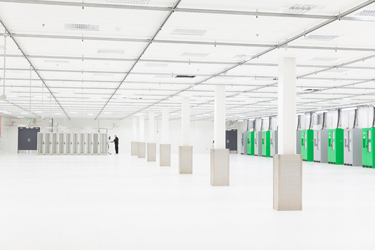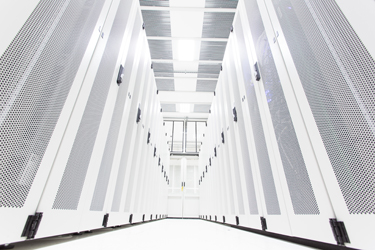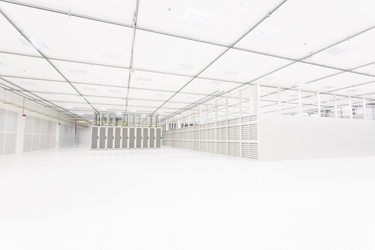First Prize
Fieldwork in Data Centres


 My research explores the socio-political dynamics underlying the configuration of space weather and electromagnetic pulses (EMPs) as existential risks and emerging security threats to the data centre industry.
My research explores the socio-political dynamics underlying the configuration of space weather and electromagnetic pulses (EMPs) as existential risks and emerging security threats to the data centre industry.
EMPs and severe space weather events like solar flares, coronal mass ejections or geomagnetic storms disrupt the Earth’s magnetic field and induce high-voltage surges in electromechanical equipment, potentially short-circuiting or even melting the fragile components found in the modern technologies that hold together and empower ‘digital societies’.
The disruptive and destructive effects of space weather and EMPs upon terrestrial technological systems largely remained the concern of aerospace scientists and the military until relatively recently when governments, critical infrastructure protection practitioners and data centres began to address them in security initiatives.
My multi-sited fieldwork was conducted with high-security ‘EMP-proof’ data centres, cloud computing companies and disaster recovery specialists across the UK, Europe and US. My research has brought me into contact with a diverse group of actors working at the forefront of EMP and space weather preparedness efforts, including solar physicists, electrotechnical engineers, emergency planners, the UK Defence Committee, energy sector policy makers and infrastructure security experts.
From top right:
There are People in the Cloud
A recurring feature in images and imaginaries of the data centre is the complete absence of human beings. The top cause of data centre ‘downtime’ is human error so the less human these buildings can be made to look, the more safe and secure they supposedly appear. Photographs of depopulated datacentrescapes, spread through the mass media, conjure fantasies fears and futures of nonhuman automation. These persistent representational strategies invisibilise not only the people in the cloud but also their labour. Unlike the widely-circulated images of fluorescent emptiness may lead viewers to imagine, these machine-architectures are not devoid of people, in fact, there are bits of all of us stored inside them.
The Server-cabineted Corridor
The most frequently encountered representation of data centres today is no doubt the image of the server cabineted-corridor. It is on the endlessly flickering servers locked behind these perforated steel security doors that data from people all over the world is stored, managed and distributed. A low angle shot is often used, transforming the server cabinets into sublime, giant monoliths while the symmetrical geometries of the cabinets combine with the single-point perspective to suck the viewer’s gaze into a vortex-like vanishing point.
A World of White Space
‘White space’ is a term used in the data centre industry to describe usable space that is available for future data and IT equipment. Optimisation of white space is a key part of data centre design as the ability to expand computing capacity is essential to ensuring long-term business growth. The vast and startling whiteness, reminiscent of the training simulation sequences in The Matrix, reflects not only the future-orientated temporalities of cloud infrastructure but also the logics of excess, preparedness, resilience, redundancy and contingency that underpin these ‘future-proofed’ architectures. The hard, metallic and impregnable surfaces of this distinctly un-cloudlike material infrastructure are protective revetments or shields against the various signals, transmissions, frequencies and electric fields emitted by electro-digital technologies from within and without the fortified facility.
